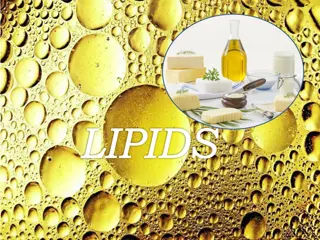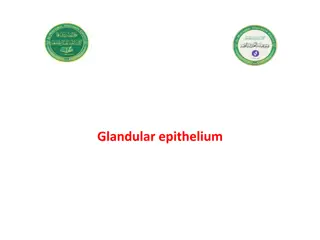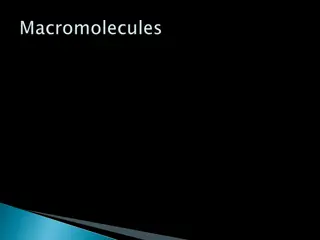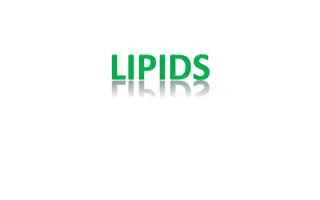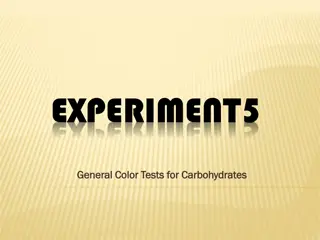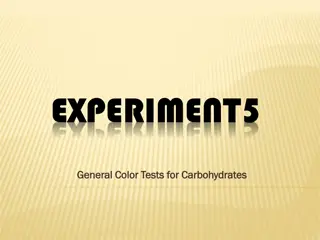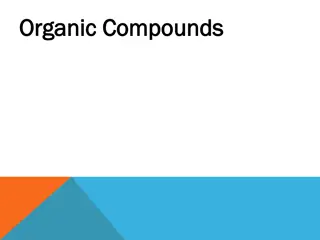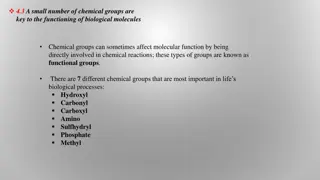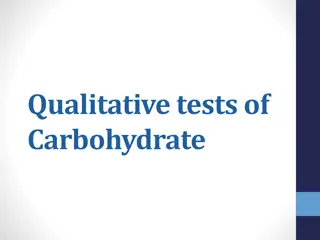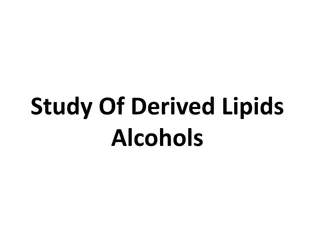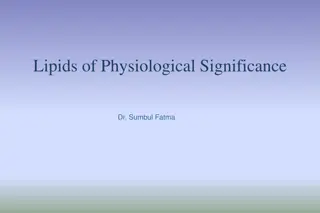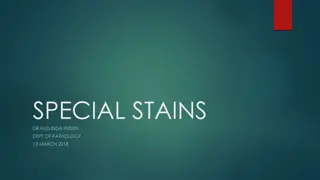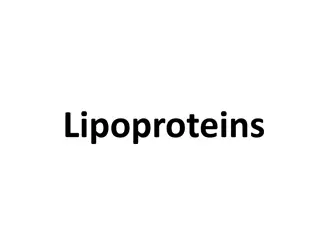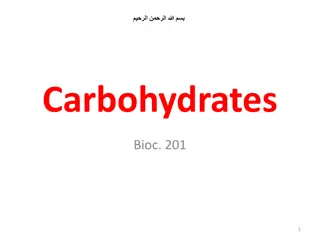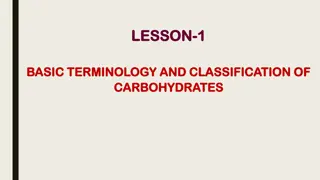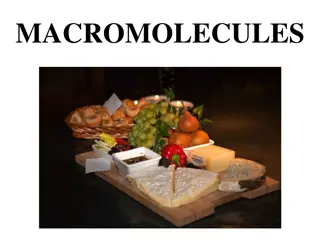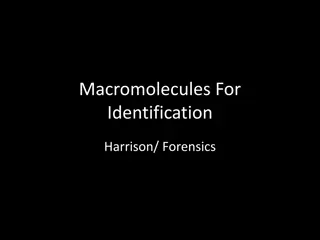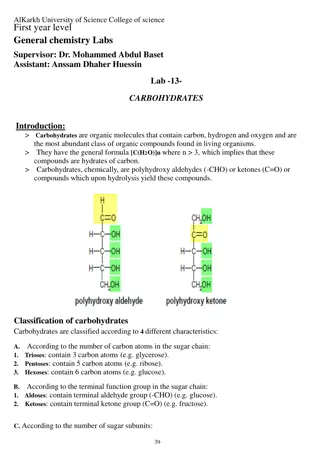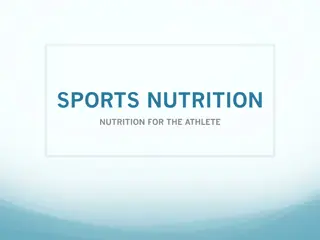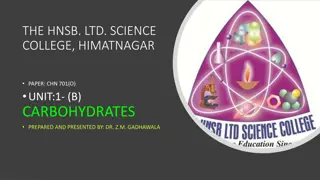Understanding Carbohydrates and Lipids in Macromolecules
Explore the world of carbohydrates and lipids, essential macromolecules in chemistry. Carbohydrates provide energy and are found in foods like fruits, bread, and pasta, while lipids like fats play a crucial role in storing excess energy. Discover the types of carbohydrates, digestion processes, and the differences between saturated and unsaturated fats. Enhance your knowledge of these fundamental components through clear explanations and illustrative images.
Download Presentation

Please find below an Image/Link to download the presentation.
The content on the website is provided AS IS for your information and personal use only. It may not be sold, licensed, or shared on other websites without obtaining consent from the author. Download presentation by click this link. If you encounter any issues during the download, it is possible that the publisher has removed the file from their server.
E N D
Presentation Transcript
Chemistry - MACROMOLECULES Carbohydrates & Lipids
Carbohydrates C H & O Examples of your diet that are Carbohydrates: Milk fruit, bread, Potatoes, Pasta, Grains, Beans, and Yogurt Function of Carbohydrates: Energy Immediate & Stored 45 65% of Diet
Carbohydrate Groupings Hydroxyl Group (-OH) Carbonyl Functional Group (C=O)
Types of Carbohydrates Monosaccharide - Single Molecule (C6H12 O6) Glucose (Blood sugar), Immediate energy Disaccharide Two molecules Lactose & Sucrose (Table Sugar) Lactose = Glucose & Galactose Sucrose = Glucose & Fructose Polysaccharide Complex Carbohydrates Starch - Pasta Cellulose Fiber (Wood) Glycogen made by animals to store energy in the liver and muscles
Digestion of Carbohydrates Starts in the mouth with enzymes & mechanical digestion Then continues in the stomach with more enzymes Finally in the Small Intestine, Sucrase enzymes breaks down disaccharides into monosaccharides Lactase breaks down lactose into glucose and galactose
Activity Use the molecules to make a Carbohydrate pHET Activity Biology Eating & Exercise
Macromolecules Fats 20 35% Diet Examples: Meat, Fish, Poultry, Oils, Dairy, Nuts, Grains Excess food energy is stored in the body as fat. Fats are nonpolar hate water Have long hydrocarbon chains - Fatty Acids COOH Palmitic Acid Linolenic Acid
Triglycerides Glycerol molecules + 3 Fatty Acids
Saturated & Unsaturated Fats Saturated No double bonds - Coconut Oil Mostly from animal fat, solid at room temperature Arterial plague Hardening of the arteries Atheroscrosis Coronary Artery Disease Heart & Brain Unsaturated has a double or triple bond Plants, oils, Liquid at room temperature
Good Fats in the Body Phospholipid Bilayer You must have fat in your plasma membranes of your cells all 3 Trillion of them. Steroids Sex Hormones Cholesterol creates stability in the plasma membrane Vitamin D helps with the formation of bone and the absorption of Calcium
Energy in Food Carbohydrates = 4 Cal/gram 45 65 % Diet Carbohydrate Fat = 9 Cal/ gram 30% Diet Fat Protein = 4 Cal /Gram 12 20% Diet Protein
Activity Use the molecules to make a Fat pHET Activity
Project Macromolecules Monitoring your Diet .5 Credits For three days make a diary of everything you eat. Make a column for the Food you ate, the quantity, the calories, & the macromolecule (Protein, Carbohydrate, or Fat) Calculate how much of your diet is Protein, Carbohydrate, and Fat 12 20% Diet Protein 45 65 % Diet Carbohydrate 30% Diet Fat
Day 1 Day 2 Day 3 Foods you ate/ drank Size of portions (grams) Calculate the calories: Carbohydrate (4 Cal/gram) Fat (9 Cal/ gram) Protein (4 Cal/ gram) What % of your daily diet was Carbs, Fat, Protein?
Works Cited Chemistry Matter & change P. 781 786 Chemistry in the Community P. 583 - 601


